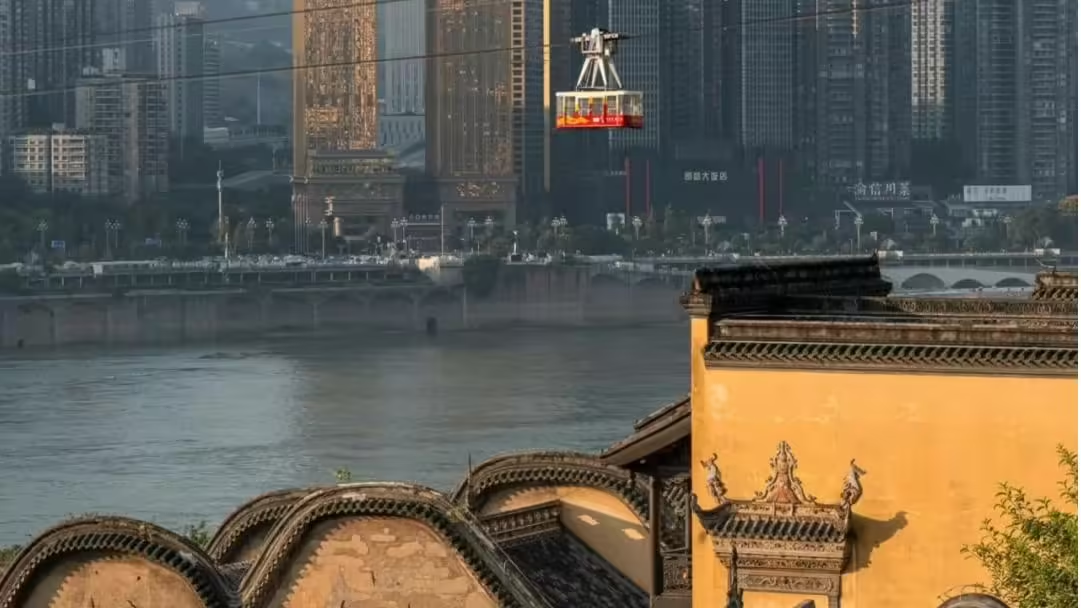Located at No. 1, Bajiaoyuan, Changbin Road, Yuzhong District, Chongqing, the Huguang Guild Hall stands as a remarkable historical complex. Initially built in 1759 during the 24th year of Emperor Qianlong’s reign in the Qing Dynasty, it was expanded in 1846. Covering an area of 18,400 square meters, this guild hall combines ancient Qing Dynasty structures like the Yu King Palace, Qi’an Guild Hall, and Guangdong Guild Hall with additional architectural elements, making it a unique and expansive attraction.
Architectural Highlights
The Huguang Guild Hall reflects the traditional architectural style of the Ming and Qing dynasties, with many buildings arranged in the layout of a classic quadrangle courtyard. Various roof designs, including suspended, rolled-up, and hipped roofs, showcase the versatility and beauty of ancient Chinese architecture. The guild hall not only incorporates typical architectural elements from regions such as Guangdong, Guangxi, Hunan, and Hubei but also blends the local architectural characteristics of Chongqing. This combination creates a unique Southern Chinese architectural masterpiece, making it the largest and most preserved ancient guild hall complex in China.
The Yu King Palace is the most prominent building within the Huguang Guild Hall, occupying approximately one-third of the total area. Originally constructed during the reign of Emperor Kangxi, it was expanded in 1846 and served as a place for Huguang immigrants to pray for favorable weather and safe travels.
Key Attractions and Cultural Significance
Huguang Guild Hall stands as a testament to Chongqing’s bustling history as a commercial hub. Its significance spans across the early Qing Dynasty to the early Republic of China era, representing an important cultural marker of Chongqing’s immigrant history, commercial development, and architectural legacy. Visitors can explore its stunning courtyards, admire its intricately designed buildings, and learn about the cultural exchanges that shaped the area.
Suggested Tour Routes

To help visitors explore the extensive grounds, there are three main routes available:
- Route A: Immigration Museum (移民博物馆) → Yu King Palace (禹王宫) → Yuzhou Academy (渝州书院) → Guangdong Guild Hall (广东公所) → Qi’an Guild Hall (齐安公所) → Carving Museum (雕刻博物馆)
- Route B: Immigration Museum (移民博物馆) → Carving Museum (雕刻博物馆) → Yu King Palace (禹王宫) → Yuzhou Academy (渝州书院) → Guangdong Guild Hall (广东公所) → Qi’an Guild Hall (齐安公所)
- Route C: Immigration Museum (移民博物馆) → Carving Museum (雕刻博物馆) → Qi’an Guild Hall (齐安公所) → Yu King Palace (禹王宫)
Each route provides unique insights into different aspects of the guild hall, from the significance of the Yu King Palace to the art of traditional Chinese wood carving showcased in the Carving Museum.
Photography Spots
Huguang Guild Hall also offers fantastic photography opportunities for visitors looking to capture Chongqing’s charm. Here are two recommended spots:
Inside the Hall: Capture the contrasting beauty of the ancient buildings alongside the modern Dongshuimen Bridge, creating a striking juxtaposition of historical and contemporary architecture.
Observation Elevator by Dongshuimen Bridge: After exploring the guild hall, take the elevator near the exit to Dongshuimen Bridge, where you can enjoy a bird’s-eye view of the entire Huguang Guild Hall complex framed by the Yangtze River Cableway.

